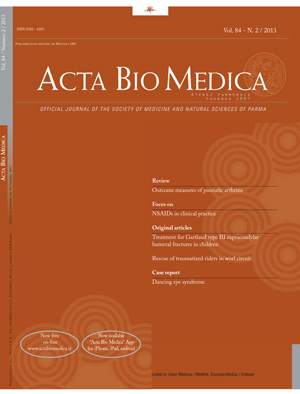ARE PERCUTANEOUS PINNING THE BEST TREATMENT FOR GARTLAND TYPE III SUPRACONDYLAR HUMERAL FRACTURES IN CHILDREN?
Keywords:
supracondylar humeral fracture, percutaneous pinning, children fractureAbstract
Background. Supracondylar humeral fractures are the most frequent fractures of the elbow in children. Gartland type III fractures require a surgical treatment. The preferred management is closed reduction and percutaneous pinning with K-wires.
Methods. We have treated 15 patients (mean age 6,5 years) with Gartland type III fractures. In 14 patients the percutaneous reduction with K-wires was possible but in 1 case the open reduction was necessary due to the irreducibility of the fracture. In all cases a cycle of rehabilitation was performed.
Results. All patients have been evaluated using Flynn’s criteria with a mean follow-up of 24 months. All cases resulted excellent except the one that required open reduction, that resulted good.
Conclusions. Percutaneous pinning is at our days the gold standard of treatment but open reduction must always be considered mandatory when an anatomical closed reduction is not possible. Rehabilitation is also fundamental though the young age of the patients.Downloads
Published
Issue
Section
License
This is an Open Access article distributed under the terms of the Creative Commons Attribution License (https://creativecommons.org/licenses/by-nc/4.0) which permits unrestricted use, distribution, and reproduction in any medium, provided the original work is properly cited.
Transfer of Copyright and Permission to Reproduce Parts of Published Papers.
Authors retain the copyright for their published work. No formal permission will be required to reproduce parts (tables or illustrations) of published papers, provided the source is quoted appropriately and reproduction has no commercial intent. Reproductions with commercial intent will require written permission and payment of royalties.



